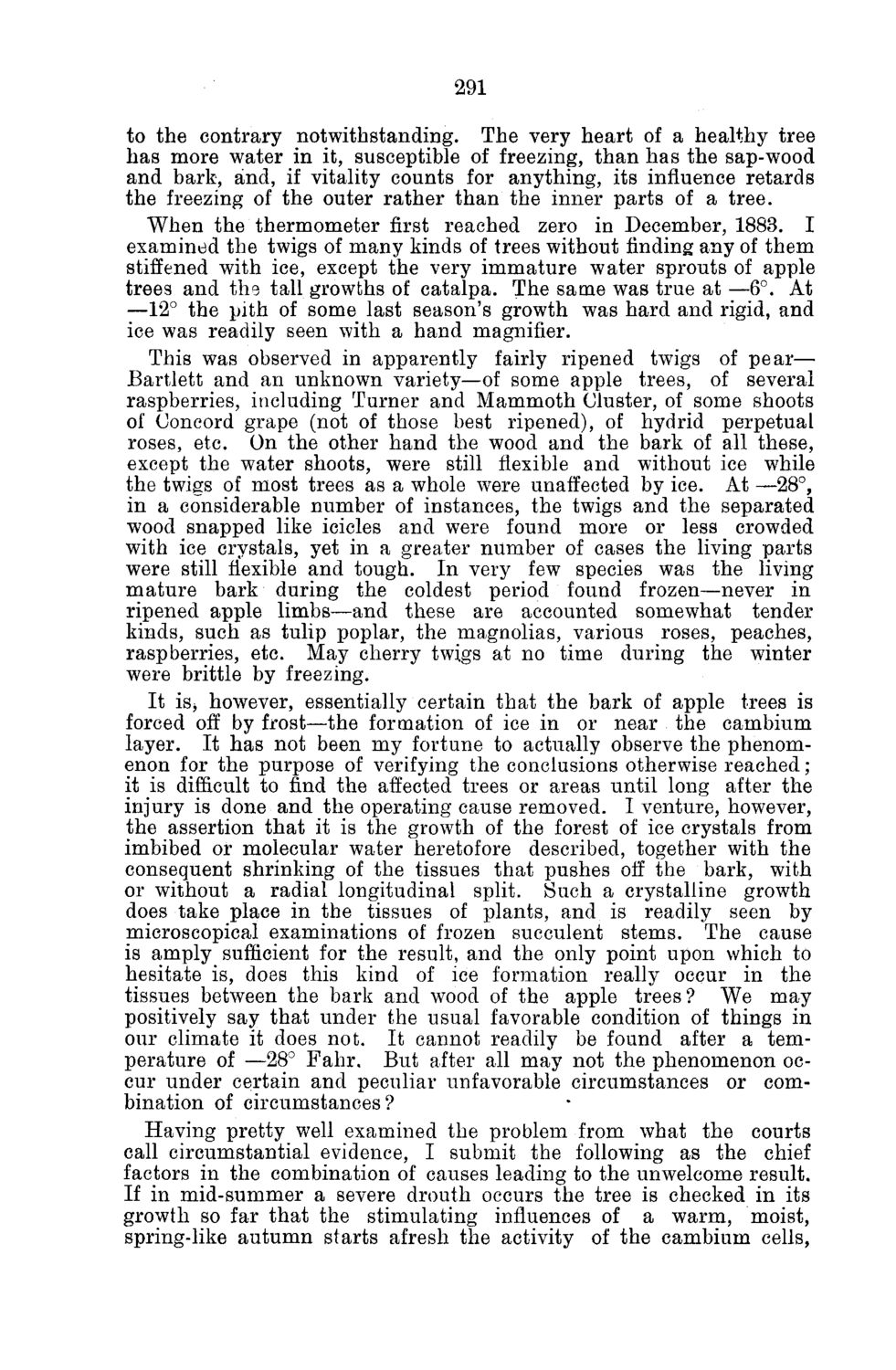| |
| |
Caption: Board of Trustees Minutes - 1886
This is a reduced-resolution page image for fast online browsing.

EXTRACTED TEXT FROM PAGE:
291 to the contrary notwithstanding. The very heart of a healthy tree has more water in it, susceptible of freezing, than has the sap-wood and bark, and, if vitality counts for anything, its influence retards the freezing of the outer rather than the inner parts of a tree. When the thermometer first reached zero in December, 1883. I examined the twigs of many kinds of trees without finding any of them stiffened with ice, except the very immature water sprouts of apple trees and the tall growths of catalpa. The same was true at —6°. At —12° the pith of some last season's growth was hard and rigid, and ice was readily seen with a hand magnifier. This was observed in apparently fairly ripened twigs of pear— Bartlett and an unknown variety—of some apple trees, of several raspberries, including Turner and Mammoth Cluster, of some shoots of Concord grape (not of those best ripened), of hydrid perpetual roses, etc. On the other hand the wood and the bark of all these, except the water shoots, were still flexible and without ice while the twigs of most trees as a whole were unaffected by ice. At —28°, in a considerable number of instances, the twigs and the separated wood snapped like icicles and were found more or less crowded with ice crystals, yet in a greater number of cases the living parts were still flexible and tough. In very few species was the living mature bark during the coldest period found frozen—never in ripened apple limbs—and these are accounted somewhat tender kinds, such as tulip poplar, the magnolias, various roses, peaches, raspberries, etc. May cherry twigs at no time during the winter were brittle by freezing. It is> however, essentially certain that the bark of apple trees is forced off by frost—the formation of ice in or near the cambium layer. It has not been my fortune to actually observe the phenomenon for the purpose of verifying the conclusions otherwise reached; it is difficult to find the affected trees or areas until long after the injury is done and the operating cause removed. I venture, however, the assertion that it is the growth of the forest of ice crystals from imbibed or molecular water heretofore described, together with the consequent shrinking of the tissues that pushes off the bark, with or without a radial longitudinal split. Such a crystalline growth does take place in the tissues of plants, and is readily seen by microscopical examinations of frozen succulent stems. The cause is amply sufficient for the result, and the only point upon which to hesitate is, does this kind of ice formation really occur in the tissues between the bark and wood of the apple trees? We may positively say that under the usual favorable condition of things in our climate it does not. It cannot readily be found after a temperature of —28° Fahr. But after all may not the phenomenon occur under certain and peculiar unfavorable circumstances or combination of circumstances? Having pretty well examined the problem from what the courts call circumstantial evidence, I submit the following as the chief factors in the combination of causes leading to the unwelcome result. If in mid-summer a severe drouth occurs the tree is checked in its growth so far that the stimulating influences of a warm, moist, spring-like autumn starts afresh the activity of the cambium cells,
| |